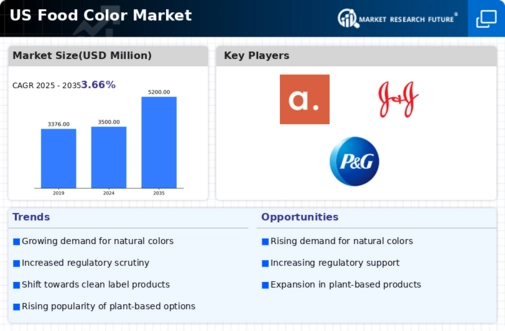US Food Color Market Summary
The US Food Color market is projected to grow from 3500 USD Million in 2024 to 5200 USD Million by 2035, reflecting a robust growth trajectory.
Key Market Trends & Highlights
US Food Color Key Trends and Highlights
- The US Food Color market is valued at 3500 USD Million in 2024 and is expected to reach 5200 USD Million by 2035.
- The compound annual growth rate (CAGR) for the US Food Color market is estimated at 3.66% from 2025 to 2035.
- Market growth is driven by increasing consumer demand for natural food colors, which are perceived as healthier alternatives.
- Growing adoption of natural food colors due to rising health consciousness among consumers is a major market driver.
Market Size & Forecast
| 2024 Market Size | 3500 (USD Million) |
| 2035 Market Size | 5200 (USD Million) |
| CAGR (2025 - 2035) | 3.66% |
Major Players
Apple Inc (US), Microsoft Corp (US), Amazon.com Inc (US), Alphabet Inc (US), Berkshire Hathaway Inc (US), Meta Platforms Inc (US), Tesla Inc (US), Johnson & Johnson (US), Visa Inc (US), Procter & Gamble Co (US)













